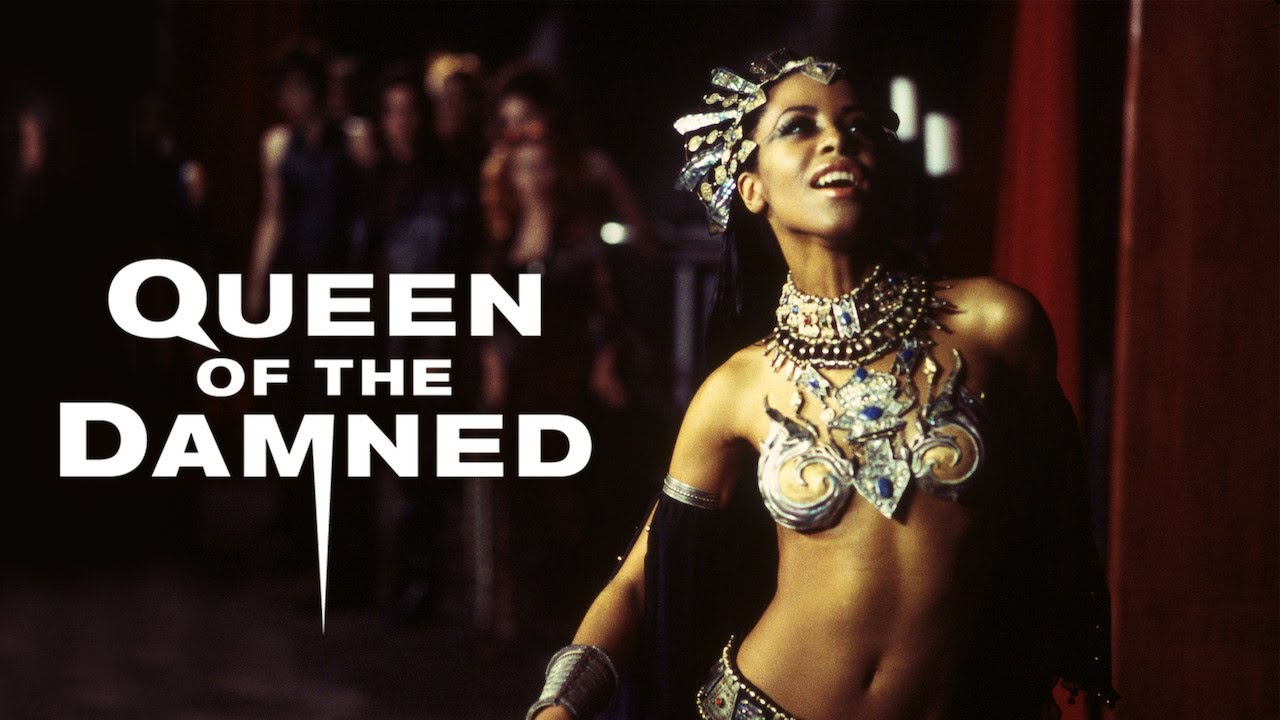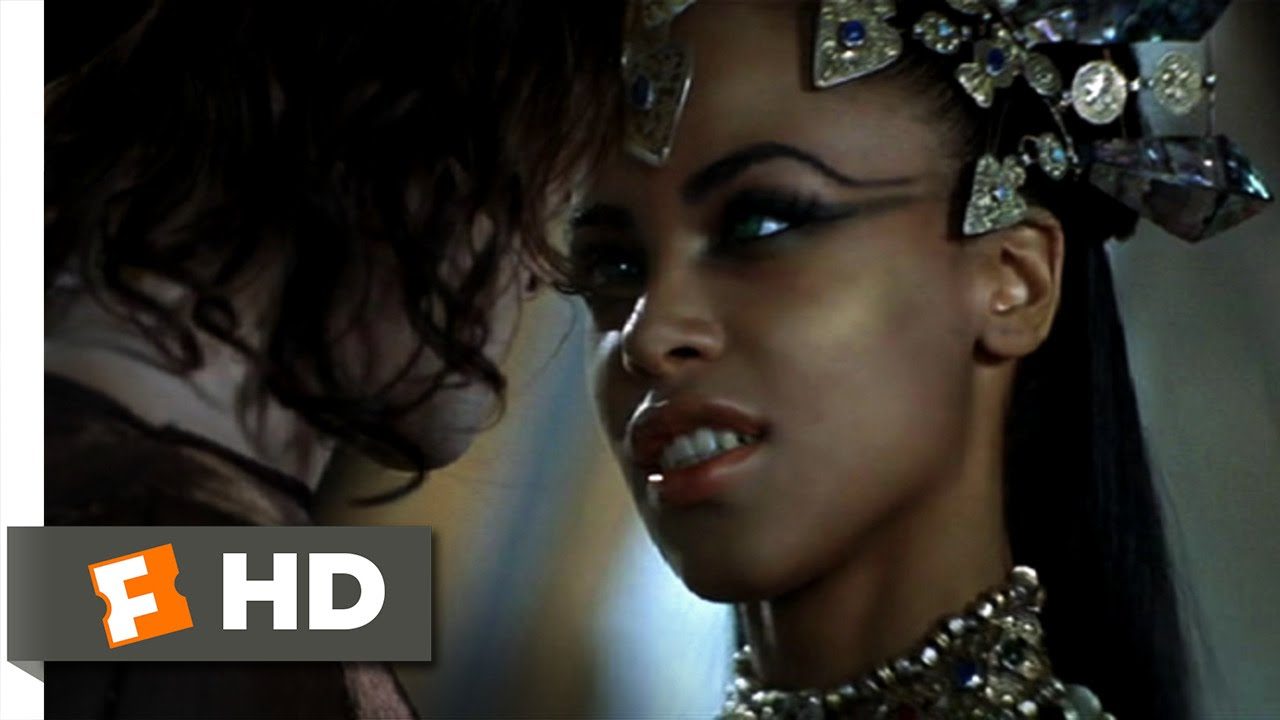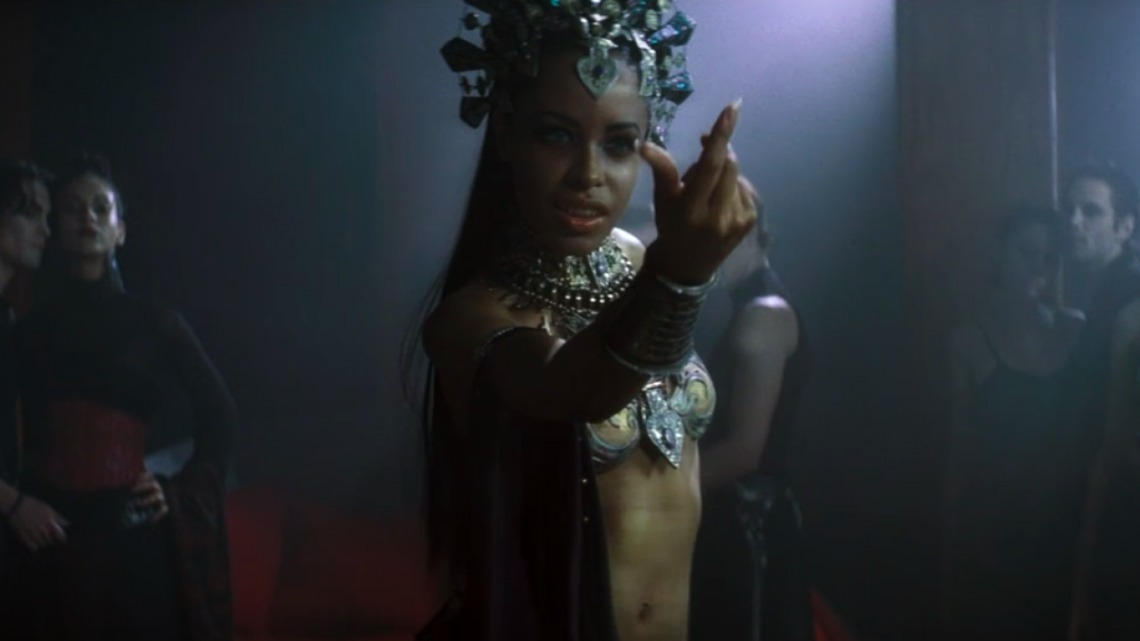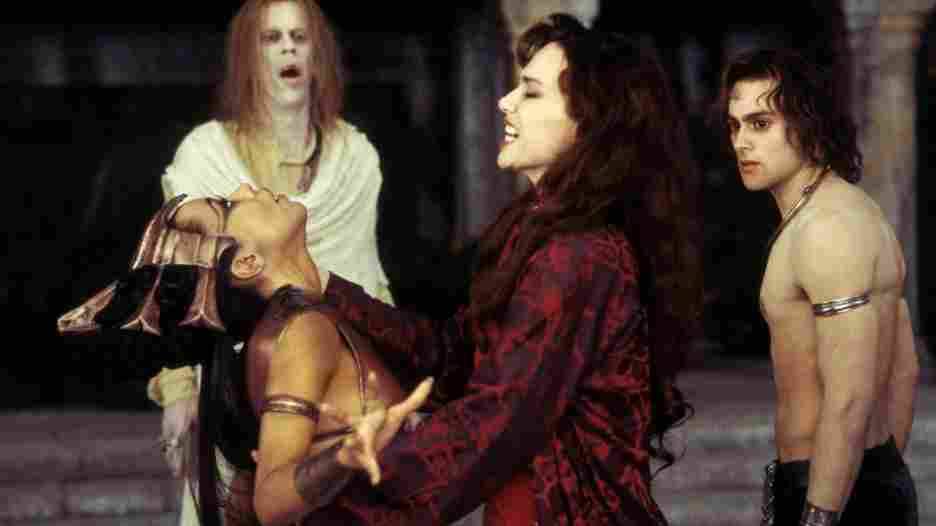Queen of the Damned (2002)

“Queen of the Damned” is a 2002 vampire film directed by Michael Rymer, based on the 1988 novel The Queen of the Damned by Anne Rice. The film is the third installment in The Vampire Chronicles series, following Interview with the Vampire and The Vampire Lestat. With a screenplay written by Scott Abbott and Michael Petroni, the film delves into the dark and seductive world of vampires, bringing Anne Rice’s characters to life with a mix of gothic horror and passionate intrigue. The movie explores themes of immortality, power, and the struggles between the ancient and modern worlds.
The film’s plot centers around the awakening of the ancient vampire queen, Akasha, played by Aaliyah in her final film role. After centuries of slumber, Akasha rises from the depths of her tomb, determined to reshape the world in her image and rule over both vampires and humans. She seeks the powerful vampire Lestat (Stuart Townsend), who has recently come into the public eye, to help her carry out her plans of domination. As Akasha’s dark influence grows, Lestat and other vampires must face the consequences of her actions and the threat she poses to their existence.
“Queen of the Damned” stands out with its strong, charismatic performances, especially by Aaliyah. Her portrayal of Akasha is both seductive and menacing, capturing the complex nature of a centuries-old vampire queen who sees herself as a god and is determined to control the world. Stuart Townsend as Lestat brings his character’s rebellious and charming nature to the forefront, though his portrayal sometimes contrasts with the deeper, philosophical themes present in the book. The dynamic between Lestat and Akasha forms the core of the movie’s conflict, highlighting the battle for control, power, and the price of immortality.

The movie blends elements of horror, action, and romance, with a heavy focus on the gothic atmosphere that fans of Anne Rice’s work expect. The settings, such as the decaying ruins of ancient civilizations and the dark, opulent interiors of the vampire world, enhance the eerie and dramatic tone. The film also features a modern rock soundtrack, adding a contemporary edge to the timeless themes of vampirism and immortality. The contrast between Akasha’s ancient, regal demeanor and the modern world Lestat inhabits is one of the film’s most striking visual and thematic elements.

Despite its engaging premise and visually captivating scenes, “Queen of the Damned” received mixed reviews from critics and fans alike. One of the criticisms of the film is that it condenses much of the depth and complexity of Anne Rice’s novel, which may have left some fans of the book disappointed. The film’s fast pace and relatively simplified plot fail to capture the full richness of Rice’s original work, and some of the philosophical depth of the characters’ inner struggles is lost in the transition to the screen. However, for viewers seeking a more action-driven vampire movie, the film offers plenty of suspense and thrilling moments.

In conclusion, “Queen of the Damned” is a visually striking vampire film that combines gothic horror with elements of modern drama and music. While it may not fully live up to the literary depth of Anne Rice’s The Vampire Chronicles, it offers a dark, seductive tale of immortality, power, and the eternal conflict between vampire factions. With its charismatic performances and atmospheric settings, the film remains an intriguing watch for fans of the vampire genre and those drawn to stories of ancient creatures clashing with the modern world.











